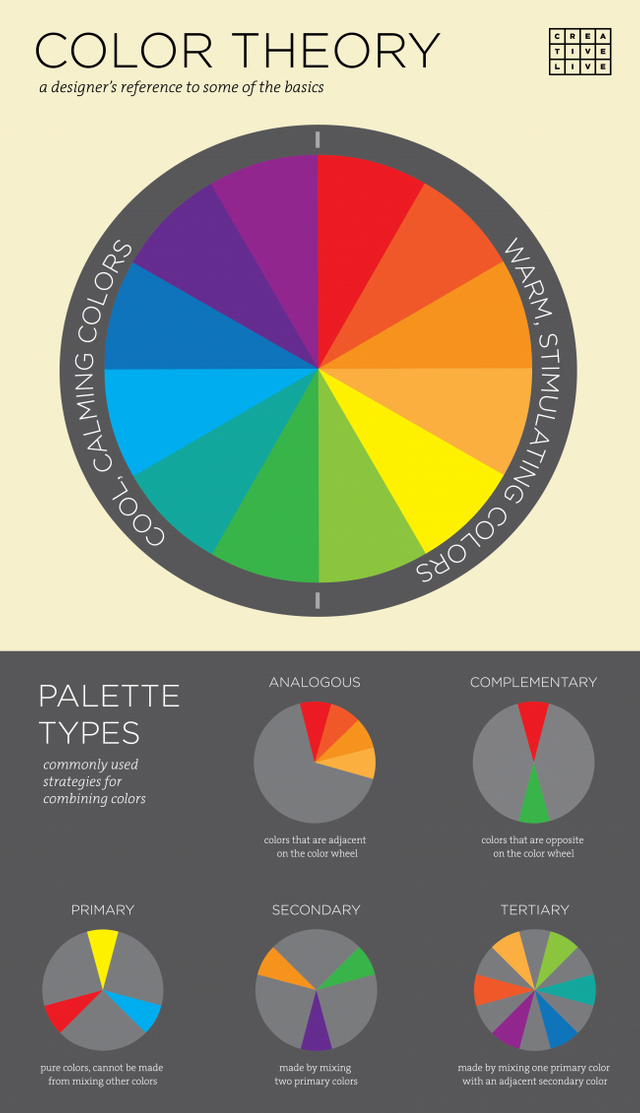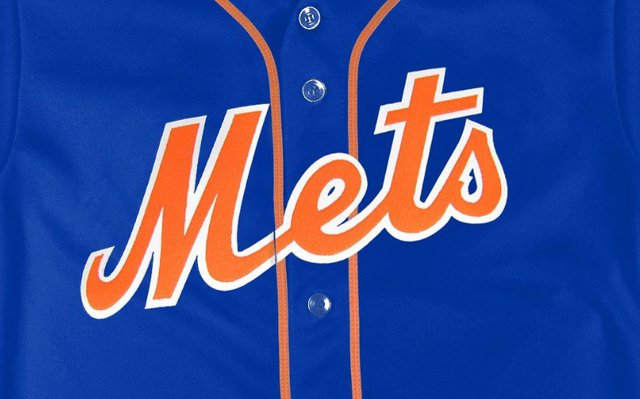
Color Theory has genuine useful incentive for originators. The standards of shading hypothesis are much the same as the other plan standards we utilize each day—they are imaginative instruments that can be utilized to take care of visual issues.
In visual correspondence, a shading palette is an arrangement of hues that cooperate to express a thought—boisterous, peaceful, light, substantial, warm, cool, customary, cutting edge, and so on. Most shading palettes utilized as a part of visual depiction ventures, such as marking, are worked around a base shading, some of the time called a "legend shading." The saint shading is normally upheld by at least two hues. A few brands utilize two saint hues.
This accommodating infographic on shading hypothesis for architects is conveyed to you by Richard Mehl and CreativeLive.
1: Picking a Hero Color
Picking a legend shading is frequently the least demanding piece of making a shading palette. The legend shading is typically connected with a recognizable thought. For instance, we connect blue with cool temperatures, orange with warmth, red with enthusiasm, green with development. A blue saint shading can mean thoughts identified with coolness, similar to quiet, tranquility, peace. Subtlety can be added to the articulation by changing the daintiness, temperature, or immersion of a legend shading—all types of shading contrast.
2: Picking the Supporting Colors
The supporting hues work with the legend shading to express or supplement the thought. Picking the supporting hues isn't generally as simple as picking the saint shading. A fundamental attention to shading hypothesis is useful, particularly the speculations of shading contrast. Suppose our saint shading is red. In the event that we need our shading palette to express solidarity, we can make the supporting hues comparable to red. A palette of comparable to hues will quite often express solidarity in light of the fact that there is negligible differentiation. Another approach to express solidarity is to utilize monochromatic hues—an arrangement of hues, all in view of a similar shade, yet fluctuating in daintiness and haziness.
3: Understanding Color Relationships
Essential hues and their cousins, the optional hues, are shading frameworks characterized by outrageous differentiation, and they make incredible shading palettes. We can manufacture a shading palette around an essential shading or optional that communicates contrast. For instance, if red is our legend shading, and we pick the other essential hues—yellow and blue—as supporting hues, the palette will express outrageous difference and extremely pop. The daintiness of yellow, and the coolness and relative haziness of blue, make the impression of these tones totally particular from the vibe of red.
Extraordinary complexity can likewise be communicated with corresponding hues. Red and green, blue and orange, yellow and violet are on the whole contrary energies on the shading wheel, and along these lines, they speak to the best distinction in tone—a definitive type of shading contrast. As I compose this, I'm viewing the New York Mets playing in the World Series. Their image hues are blue and orange, and as noted shading scholar Johannes Itten composed, they "… impel each other to greatest striking quality."

We see outrageous difference showed in each arrangement of supplements. Yet, in the meantime, we usually observe reciprocal hues together in nature and different cases of neighborhood shading. We connect correlative hues with each other, so despite the fact that they are contrary energies, they appear like common sidekicks in a palette.
Ace Tip: Try Adobe Color CC
I'm a major fanatic of this program. It has turned into a critical piece of my innovative toolbox. It enables me to try different things with an assortment of shading hypothesis standards to make shading palettes. Attempt it for yourself and see what palettes you can concoct for your next outline venture.

This post has received a 0.14 % upvote from @drotto thanks to: @banjo.
Downvoting a post can decrease pending rewards and make it less visible. Common reasons:
Submit